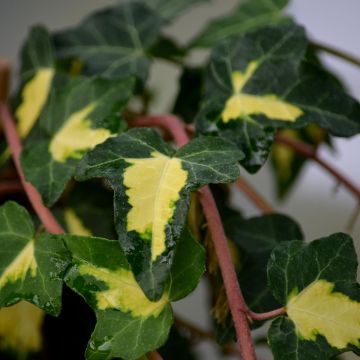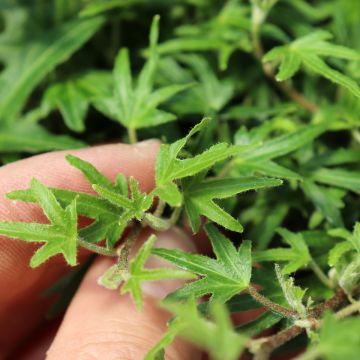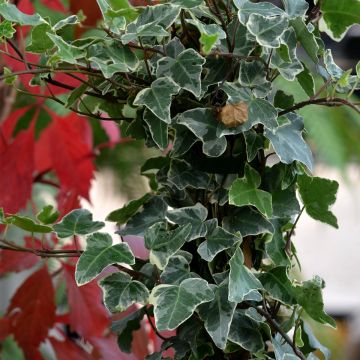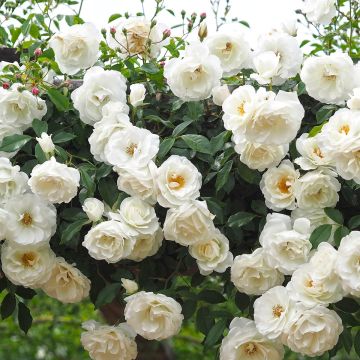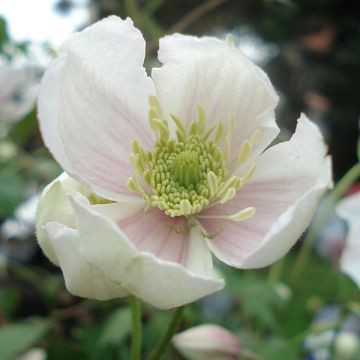

Hedera helix Cross Switch - Common ivyCommon ivy
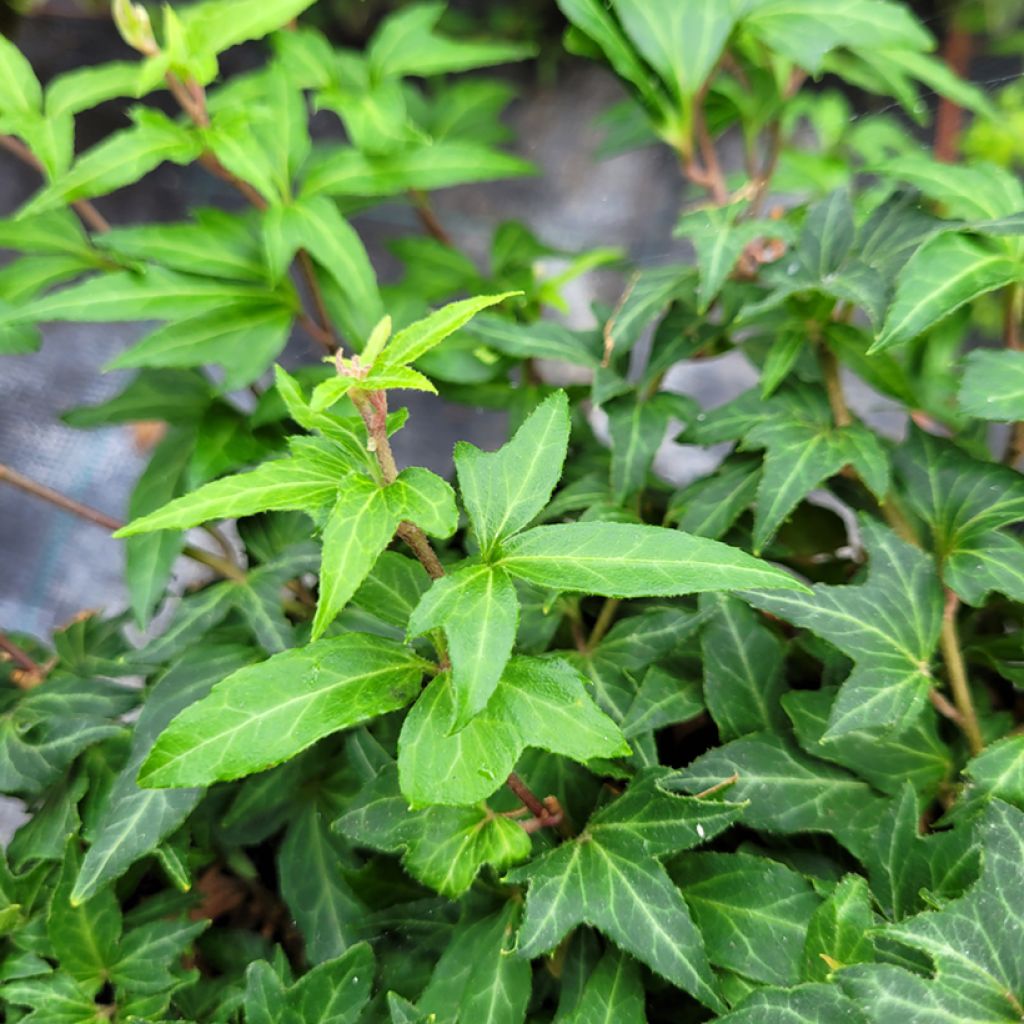

Hedera helix Cross Switch - Common ivyCommon ivy
Hedera helix Cross Switch - Common ivyCommon ivy
Hedera helix Cross Switch
Common ivy, English ivy
This item cannot be shipped to the selected country
Delivery charge from €6.90
More information
Delivery charge from €6.90
More information
Schedule delivery date,
and select date in basket
This plant carries a 6 months recovery warranty
More information
We guarantee the quality of our plants for a full growing cycle, and will replace at our expense any plant that fails to recover under normal climatic and planting conditions.
From €7.90 for pickup delivery and €6.90 for home delivery
Express home delivery from €8.90.
Does this plant fit my garden?
Set up your Plantfit profile →
Description
Hedera helix 'Cross Switch', or common ivy, is a small, versatile ornamental plant, appreciated for its original vegetation and its ability to adapt to various environments. This compact variety forms a ground cover mat that remains attractive throughout the year, even in winter. Its aesthetic qualities and ease of maintenance make it suitable for many landscaping applications, both in the ground and in pots.
Ivies belong to the Araliaceae family. The Hedera genus includes about a dozen species, the most common in our latitudes being the Common Ivy, in Latin Hedera helix. This giant of our forests can reach tens of metres in length and climb to the tops of trees. Its stems cling to their support by means of strong roots and its foliage persists in winter. It has given rise to many cultivars with varied habits and foliage, among which some remain juvenile and do not flower.
Hedera helix 'Cross Switch' is a compact cultivar derived from 'Midget'. The plant does not climb spontaneously; it forms ground-hugging clumps. Its stems have relatively long internodes. Its small palmate leaves with 5 lobes wrap around the stems. They form curious and aesthetic clusters. Their colour ranges from light green to medium bluish green with age. The plant can reach a height of 20 to 30 cm and spread over 50 cm to 1m in width. The bark is smooth on young stems and becomes rough with age.
Ornamental ivy 'Cross Switch' is a versatile and refined plant. As a ground cover, it is perfect for covering bare shaded areas or preventing erosion on a slope. In a pot, it enhances balconies and terraces with its architectural foliage. This variety pairs well with other light shade plants tolerant of dry shade such as Christmas fern ferns, barrenworts (Epimedium), European wild ginger and small periwinkles (Vinca minor 'Josefine'). Ferns bring a fine and delicate texture in contrast to the ivy foliage, while barrenworts add a touch of charm in spring with their delicate small flowers. Wild gingers, with their round and shiny leaves, offer an interesting texture, and periwinkles, with their small blue, purple, or white flowers, brighten the shade with their simple stars. These combinations can create harmonious and diverse plant compositions throughout the seasons.
Plant habit
Flowering
Foliage
Botanical data
Hedera
helix
Cross Switch
Araliaceae
Common ivy, English ivy
Cultivar or hybrid
Other Hedera - Ivy
View all →Planting and care
'Cross Switch' ivy is easy to grow and tolerates all types of soil and exposure. Accustomed to temperate forests, it prefers a semi-shaded location and a rather chalky soil, moist to dry in summer. Water abundantly when planting and in the following weeks. Prune regularly to give it shape.
Planting period
Intended location
Care
This item has not been reviewed yet - be the first to leave a review about it.
Foolproof climbers
Haven't found what you were looking for?
Hardiness is the lowest winter temperature a plant can endure without suffering serious damage or even dying. However, hardiness is affected by location (a sheltered area, such as a patio), protection (winter cover) and soil type (hardiness is improved by well-drained soil).

Photo Sharing Terms & Conditions
In order to encourage gardeners to interact and share their experiences, Promesse de fleurs offers various media enabling content to be uploaded onto its Site - in particular via the ‘Photo sharing’ module.
The User agrees to refrain from:
- Posting any content that is illegal, prejudicial, insulting, racist, inciteful to hatred, revisionist, contrary to public decency, that infringes on privacy or on the privacy rights of third parties, in particular the publicity rights of persons and goods, intellectual property rights, or the right to privacy.
- Submitting content on behalf of a third party;
- Impersonate the identity of a third party and/or publish any personal information about a third party;
In general, the User undertakes to refrain from any unethical behaviour.
All Content (in particular text, comments, files, images, photos, videos, creative works, etc.), which may be subject to property or intellectual property rights, image or other private rights, shall remain the property of the User, subject to the limited rights granted by the terms of the licence granted by Promesse de fleurs as stated below. Users are at liberty to publish or not to publish such Content on the Site, notably via the ‘Photo Sharing’ facility, and accept that this Content shall be made public and freely accessible, notably on the Internet.
Users further acknowledge, undertake to have ,and guarantee that they hold all necessary rights and permissions to publish such material on the Site, in particular with regard to the legislation in force pertaining to any privacy, property, intellectual property, image, or contractual rights, or rights of any other nature. By publishing such Content on the Site, Users acknowledge accepting full liability as publishers of the Content within the meaning of the law, and grant Promesse de fleurs, free of charge, an inclusive, worldwide licence for the said Content for the entire duration of its publication, including all reproduction, representation, up/downloading, displaying, performing, transmission, and storage rights.
Users also grant permission for their name to be linked to the Content and accept that this link may not always be made available.
By engaging in posting material, Users consent to their Content becoming automatically accessible on the Internet, in particular on other sites and/or blogs and/or web pages of the Promesse de fleurs site, including in particular social pages and the Promesse de fleurs catalogue.
Users may secure the removal of entrusted content free of charge by issuing a simple request via our contact form.


































